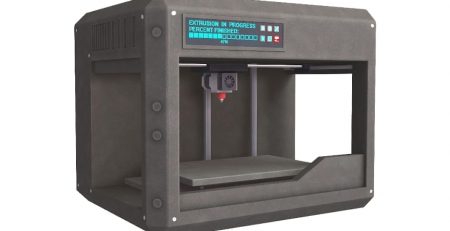The Future of Pharmaceuticals Could Be Electronic Implants
It may be a long shot, but why not try it? British drug maker[b][url=http://www.gsk.com/] GlaxoSmithKline (GSK)[/url][/b] believes the next big wave in medicine will be [b][url=http://www.nature.com/nature/journal/v496/n7444/full/496159a.html]electroceuticals[/url][/b], a buzzword the company has coined for a technology that would use electrical impulses—rather than the chemicals or biological molecules found in today’s pharmaceuticals—to treat diseases. Its vision involves more than simply taking medical devices like heart pacemakers—which use electric waveforms to activate or block bundles of nerve cells—to the next level, claims Kristopher Famm, head of bioelectronics research at GSK. The company is aiming for something much more radical: connecting thousands of tightly packed individual nerve cells with electrodes and associated circuitry to read and interpret the “code” in the collection of nerve-cell fibers that constitute a nerve, and then modulating the code to restore a specific function to a healthy state. “No treatments like this even remotely exist today,” says Famm. “The medicine will speak the body’s language.” GSK, which is spearheading a major bioelectronics research program, is awarding a US $1 million prize and providing funding for up to 40 researchers working in external labs to further its goal. It has already enlisted several academic centers to participate in the effort, including MIT, the University of Pennsylvania, and the Feinstein Institute for Medical Research, which is already researching the neural codes of several diseases to identify intervention points. Some medical-device manufacturers, such as Medtronic, the world’s largest, see potential down the road, and possible partnerships too. “Currently we are investing in such technology advancements as device miniaturization and embedding smart sensors and algorithms into our systems, and we are always open to additional new ideas that may lead to new therapies that provide clinical and economic benefit,” says John LaLonde, vice president of product development, technology, and research at [b][url=http://www.medtronic.com/about-us/businesses/neuromodulation-neurostimulation-systems/index.htm]Medtronic Neuromodulation[/url][/b]. “We do not know enough yet as to how the concept of electroceuticals will play out over the next decade. However, considering our respective areas of expertise, it is possible that a collaboration between the pharmaceutical and medical-device industries could lead to future advancements in the technology.” Famm compares the process of reading and writing electrical impulses passing through bundles of multifiber nerves to that of signals in network cables transporting digital data. Neurons carry information from one point to another as action potentials, which are spikes of voltage that ripple along a neuron’s length. If researchers can tap into the nerve to either introduce or erase an action potential, Famm says, they will be able to restore an organ or function to a healthy state, for example by coaxing insulin from the pancreas to treat diabetes. If only such a reset were that easy. Perhaps one of the biggest challenges, says Arthur Pilla, a professor of biomedical engineering at Columbia, is to discover “which bundle of nerves and which signal or regiment of signals you want to program or reprogram.” Modulating or triggering these bundles of nerves in certain ways will also require exploiting “very specific electrical properties of the signals,” argues Pilla, an expert on bioelectromagnetic fields who has been studying their therapeutic effects for decades. And he points to possible problems arising from invasive procedures that require the implantation of devices. Electroceuticals, unlike the noninvasive electromagnetic solutions Pilla has helped pioneer, will involve embedding microscopic devices. Famm imagines a possible array of nanosize electrodes that interface with nerve fibers and record the firing of individual neurons. Such arrays will need to both record and stimulate such impulses and include an intelligent signal-processing component to guide each. “While huge strides have been made with electrodes, we don’t have perfectly reliable and durable arrays that you can snap onto any nerve and that can read and write every nerve fiber,” Famm says. “That is one of our holy grails.” If they are successful, electroceuticals could offer a higher degree of control in modulating biological functions and curing diseases while avoiding unwanted side effects, according to Famm. “Our goal, basically, is to speak the electrical language of the nerves to achieve a higher treatment effect,” he says. “It’s a huge interdisciplinary challenge that will require people with deep expertise in electrical engineering, neural signal analysis, and biological functions related to diseases.” GSK is planning a global forum in December to bring research leaders together to collectively identify a key hurdle in the field of electroceuticals. The group that overcomes that hurdle will leave a million dollars richer. [b]By:[/b] John Blau of [b][url=http://spectrum.ieee.org/]Spectrum IEEE[/url][/b]














